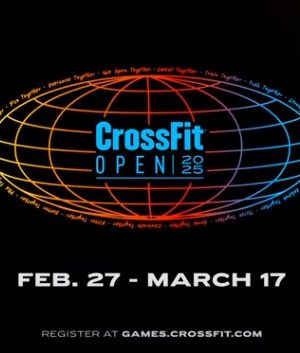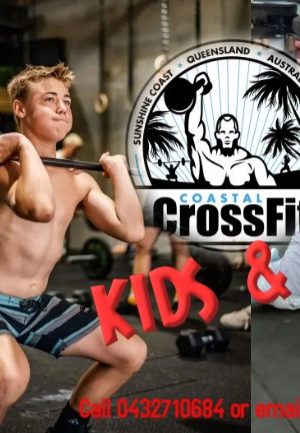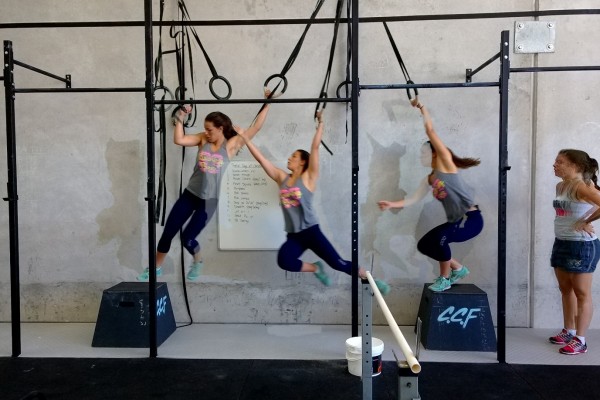In my role as a CrossFit/Strength & Conditioning coach I frequently encounter athletes who see the need for either strength OR conditioning but rarely ones who realise the need for strength AND conditioning. I see strength and conditioning for athletes who are doing CrossFit to benefit their sport as being on a sliding scale where there is certainly room to bias to one end of the spectrum or the other, depending on the demands of the sport but never a need to totally exclude training at the opposite end of the spectrum.
In my experience people who play sports typically categorize themselves or their sport as strength/power or endurance based. This is not necessarily incorrect but the problem is that as soon as the athlete has categorised themselves, it can be hard to get them to see the value of training outside of the realm of the perceived physical demands of their sport. This is especially evident in athletes who have categorised their sport as endurance based.
Very few people will argue the value of good cardiovascular function regardless of their specialization but there is a deep seeded perception within the general public and the endurance sport community that even the smallest amount of strength training is going to make them look like a pro bodybuilder and that strength training will make them slow and or bulky. There are many reasons that ALL athletes would and should strength train for success in their sport and none of them have anything to do with aesthetics.
The main reasons (or excuses) that I have encountered from athletes who pursue endurance sports for avoiding strength training seem to revolve around a lack of understanding of the need and value of being strong, not wanting to disagree with or go against the culture of training within their sport, fear of the movements, outcomes or injury, and a poor understanding of the full spectrum of the physical demands of the their sport.
Foundations: Before we get too far into this story let’s lay out some foundations – I am sure that most people will agree that strength is the foundation of power and power is the foundation of work and doing lots of work takes endurance. If your goal is to perform well at your sport then you are going to need to perform work. This being the case, we don’t have to take too many steps back in training hierarchy before we find ourselves at strength training.
Create a buffer: The training you do to prepare you for your chosen sport should mimic the movements of the sport and your strength training should exceed its maximal strength demands. Start by examining the basic functions that the sport requires of you and look for parallels in training – if the movement patterns of your sport resemble pulling, pushing, squatting, jumping, twisting etc. Then exercises that mimic these actions would be a good place to start in the gym. Next, think about the maximum effort of strength required at any one point in your event and decide whether the training you are doing exceeds that effort. It is important that your strength training exceeds the maximum strength based effort of your sport so that when you are competing you are working sub maximally. This will create a buffer zone and limit the toll on the cardio vascular system.
Let’s use a motocross rider as an example. These guys and girls often have a heavy bias towards mono-structural cardiovascular training but if we look at the demands of the sport, there is a huge strength component in that that they spend much of the time during a race (30-40 minutes) in a partial squat, in addition to soaking up the forces of jumps and whoops. Their core is working hard to transfer the power of their legs into cornering their bikes and their upper body is being hammered by pulling and pushing the handlebars.
I am certainly not disputing the obvious endurance factor required to ride a motorbike at high speed across a track for 30-40 minutes, but I am definitely willing to argue that having an excessively elevated heart and respiration rate during the event is rarely caused purely by a lack of cardio vascular conditioning. Furthermore, I am even more willing to argue that training purely in the realm of endurance is not the best way to prepare for a sport that has demands that span a much greater spectrum of physical ability.
Strength training is not just about strength: Strength training strengthens connective tissue. A person who follows a well-planned strength program will develop more robust joints and therefor is less likely to be injured in an expected (contact sports) or unexpected (all sports) contact situation. I haven’t met many cyclists who consider the role of strength training in injury prevention when they inevitably fall of their bikes.
Strength does not equal mass: There are many examples of athletes who need to be strong and powerful yet may have to stay within a weight range. Gymnasts, boxers, dancers and martial artists are but a few of the types of athletes who can benefit from being strong and powerful yet may not have a need or want for extra body mass. Probably the best example of this would be weightlifting (Olympic style). When you mention weightlifting to most people their first thought is of huge men lifting hundreds of kilos, and if fact there are many people who are unaware that there are even weight categories below that of super heavyweight or that women also compete in the sport.
To illustrate my point, the average adult male bodyweight in the US is about 84kg and the current world record for the Clean and Jerk in the lightest female weight category (under 48kg) is 121kg! To put that into perspective, for this lady to clean & jerk 121kg we can also assume that she can deadlift and squat significantly more than this, yet she weighs a mere 48kg. If strength and mass are directly proportional then you would assume that the average adult male would be able to lift significantly more than a female (even one who has had many years of training) who he nearly doubles in bodyweight – but it is definitely not the case. Furthermore I would suggest that the number of adult males of any body size that could even deadlift this weight would be extremely low let alone men who could lift it to full extension over their head.
It may not be (and probably isn’t) a lack of cardio: I frequently hear athletes blame a lack of cardio conditioning for their shortcomings in their sport simply based on the fact that they are breathing hard during, or at the end of their event. Sport and exercise is work and the percentage of your maximum strength output that you are working at for a given task will largely dictate the effect on the cardio vascular system – for example, a marathon runner obviously has a very well developed cardio vascular system but would suffer heavily from cardio vascular fatigue if you were to ask them to perform Tabata Kettlebell swings with a heavy Kettlebell. Because they are working at a very high (if not maximal) percentage of their ability for that given task then their cardio vascular system is going to have to take up the slack resulting in a high heart and respiration rate and therefor is often mistakenly perceived as simply a lack of cardio.
I think the solution to this situation is for a shift in the mentality of athletes and coaches to be in-discriminant to any type of training that could play a positive role in improving that athlete’s ability in their sport. In order for this to happen coaches need to be more willing to step outside the perceived “right” way of doing things and look at the desired outcome more objectively. This might mean anything from updating your education to a total rethink of your practices but if your goal is the best outcome for your athlete you should be more than willing to do this. Furthermore athletes who seek out the advice of good coaches need to be willing to trust that the coach has their best interests in mind and there are many considerations for training for success in sport than that athlete may have the knowledge to consider. Finally while this article has focussed on endurance athletes; regardless of whether you’re trying to get an endurance athlete to strength train or a strength athlete to endurance train the message stays the same.


